Today I have a charming little bagatelle for your consideration. It was composed by Alfreds Dombrovskis in 1958. In the diagram position, white is to play mate in two.

Keep in mind that white is always moving up the board and black is always moving down. Vertical files are labeled a--h from left to right, while horizontal ranks are labeled 1--8 from bottom to top. So, in the diagram, the white king is on e5 and the black king is on d3.
This is an example of a multiphase problem, meaning that grasping the composer's intent requires more than simply looking at the solution. We must also consider moves that almost work. In problem lingo, a white move that fails to a single black defense is called a try. In this problem, white has two tries that must be considered.
The move 1. Bc1 certainly looks promising.

The threat is 2. Nf4 mate. Black has only a single defense against this threat, but it's a good one! He plays 1. ... Bd2, which simply guards f4.
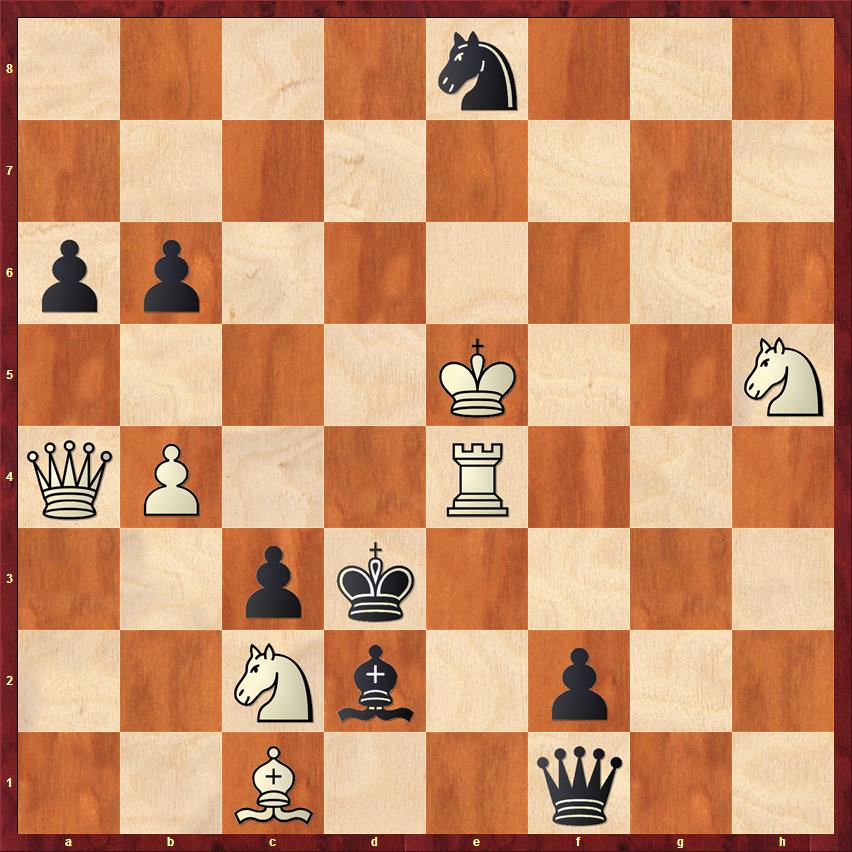
After this move, white, sadly, has no way to give mate.
By itself this is not so interesting, but there is much more to come. We will get to that shortly, but first let me introduce some more problem jargon. A critical move is one in which a piece passes over a certain square, with the effect that a subsequent move by a different piece onto that square results in an interference. White's move 1. Bc1 is sort of the reverse of that. White's bishop passes over the square f4 so that a subsequent move by his knight onto that square will not cause an interference. Such a thing is referred to as an anti-critical move.
End of digression. Getting back to the action, we might notice that white has another good try, specifically 1. Ng3.
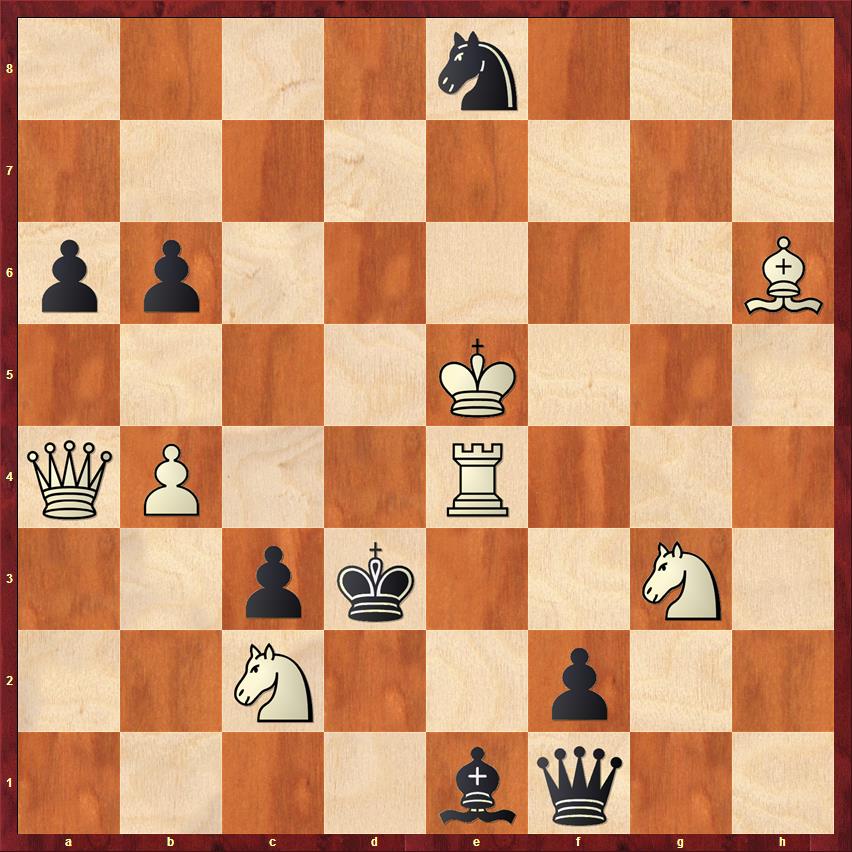
By placing a new guard on e2, the white rook is freed up to play 2. Rd4 mate on the next move. Alas, the rules of chess say that black gets to make every other move. He can play the defense 1. ... Qe2:
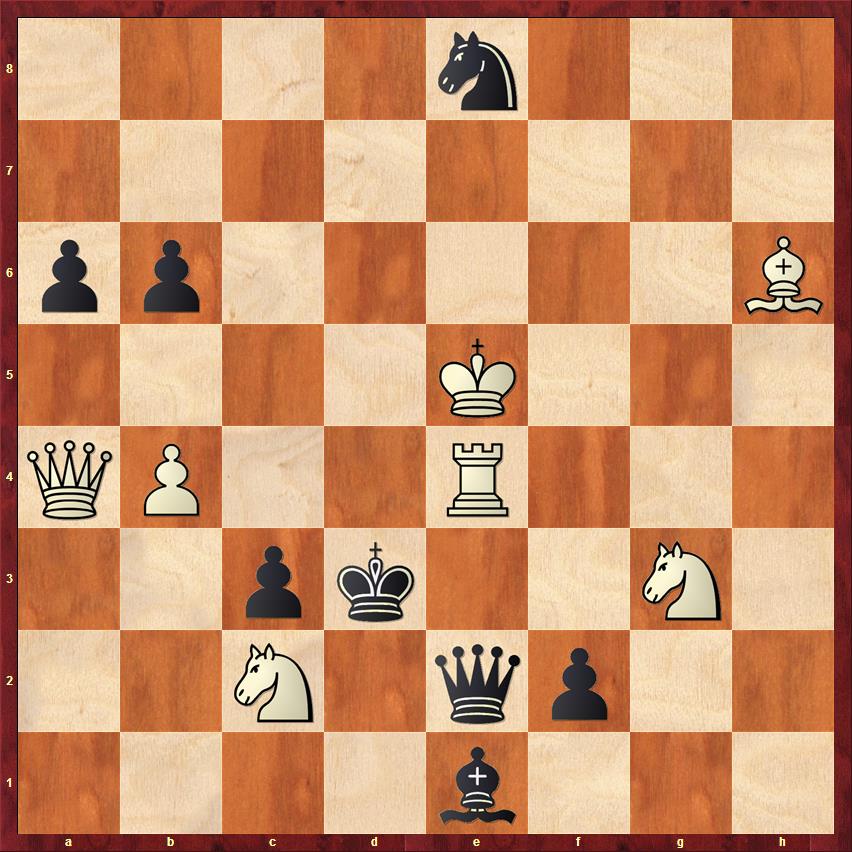
which pins the rook and leaves white without any way of giving mate on his next move. Bummer.
Still not much to get excited about, but now we come to the fireworks! The solution is for white to play 1. Ne3!:
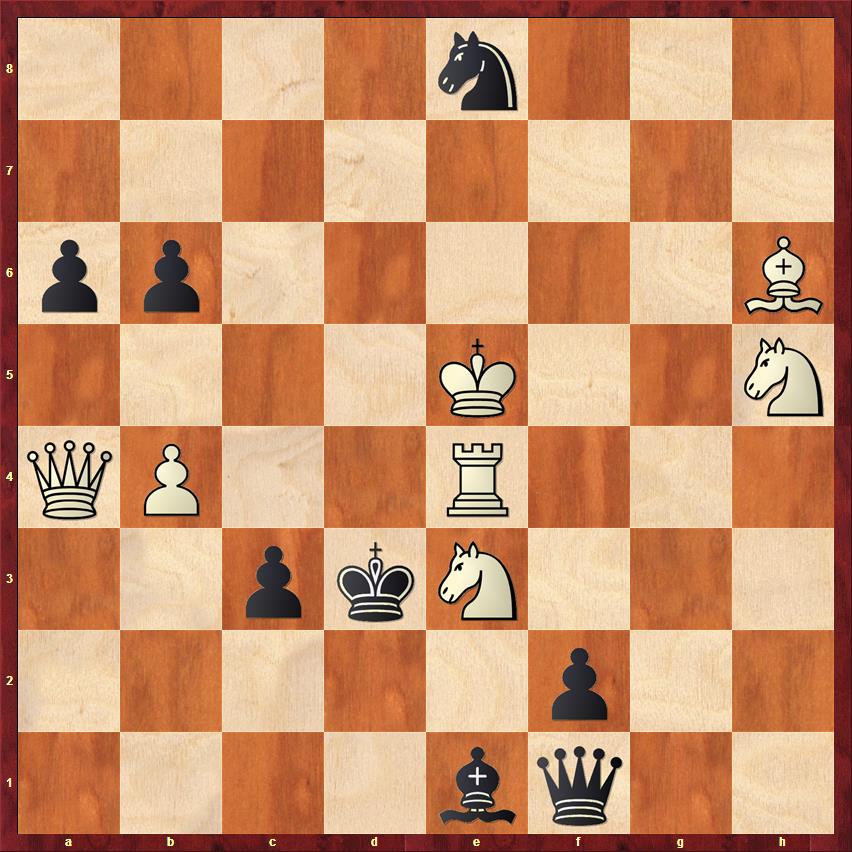
This move threatens 2. Qc2 mate, but at first blush it seems like that is where the good news ends. You see, in vacating c2 for the white queen, white has also interfered with both his rook and his bishop. Suddenly, the black king has acquired flight squares on d2 and e2.
How should black meet the threat of Qc2? One option is to play 1. ... Bd2. White cannot play 2. Qc2 now, since the bishop's interference means e2 will now not be covered. But since d2 is now blocked, and since the white knight on e3 interferes with the black bishop on d2, white can reply 2. Nf4 mate.
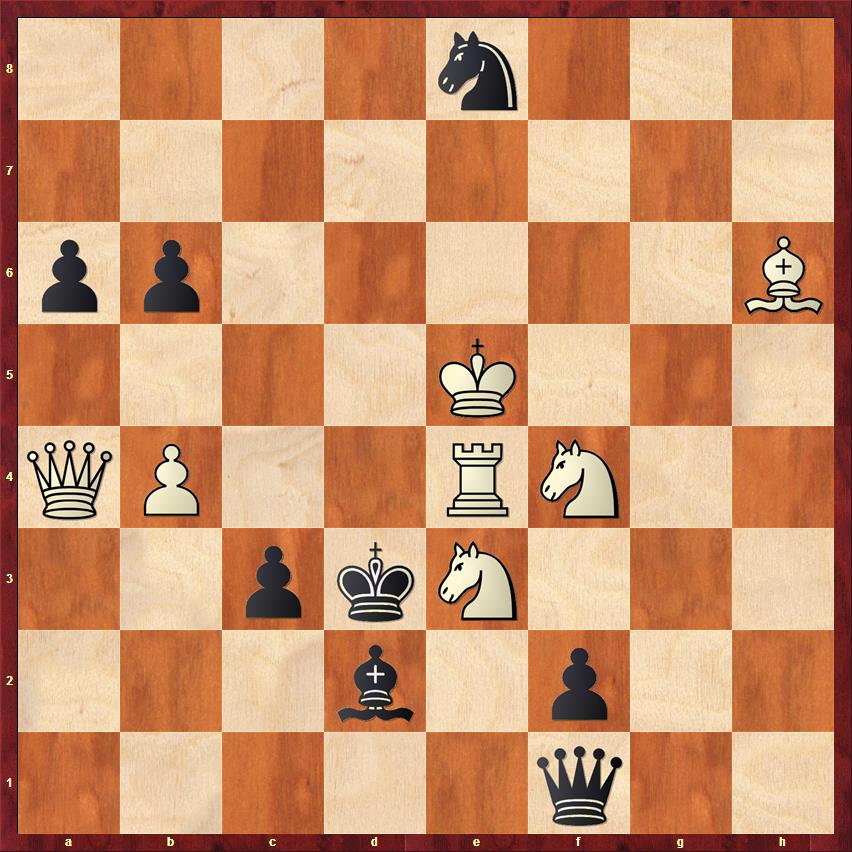
Black can also defend with 1. ... Qe2, which simply puts a guard on c2. But it also blocks the e2 square, and since the white knight on e3 interferes with the black queen on e2, white can reply with 2. Rd4 mate
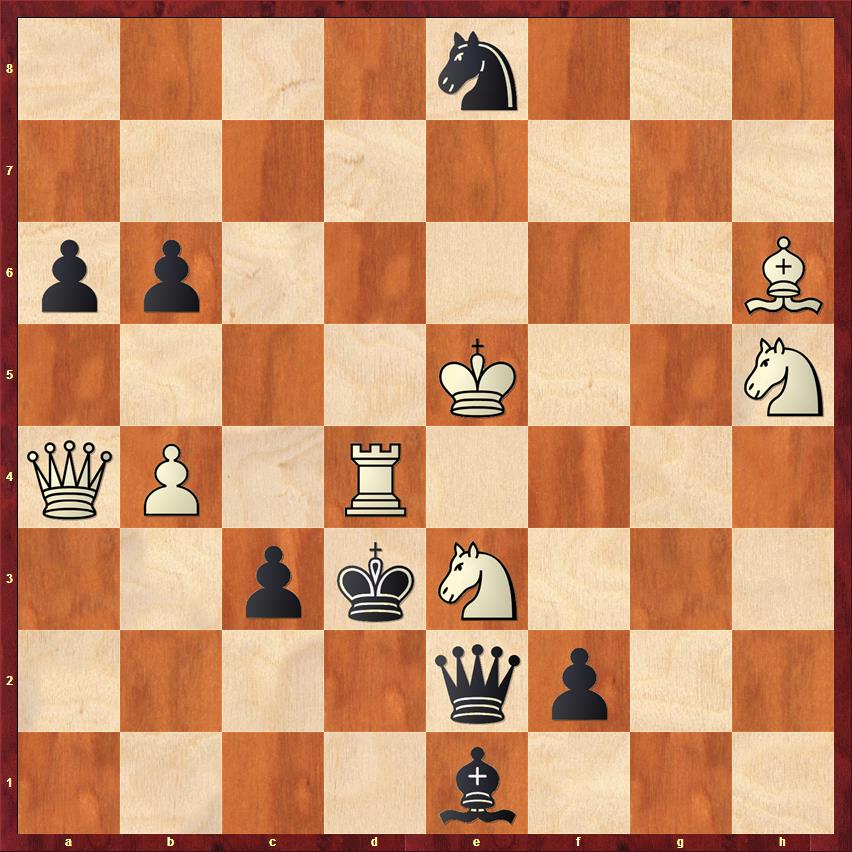
Do you see the point? After the key move, each of black's two main defenses provokes the very mate it stopped in the try play. Pretty cool! This basic pattern is now known as the Dombrovskis theme, for obvious reasons. (Well, actually, there had been problems before this showing the idea, but this remains one of the best and clearest.)
For completeness, we should mention mention the line 1. ... Ke2 2. Qd1 mate:
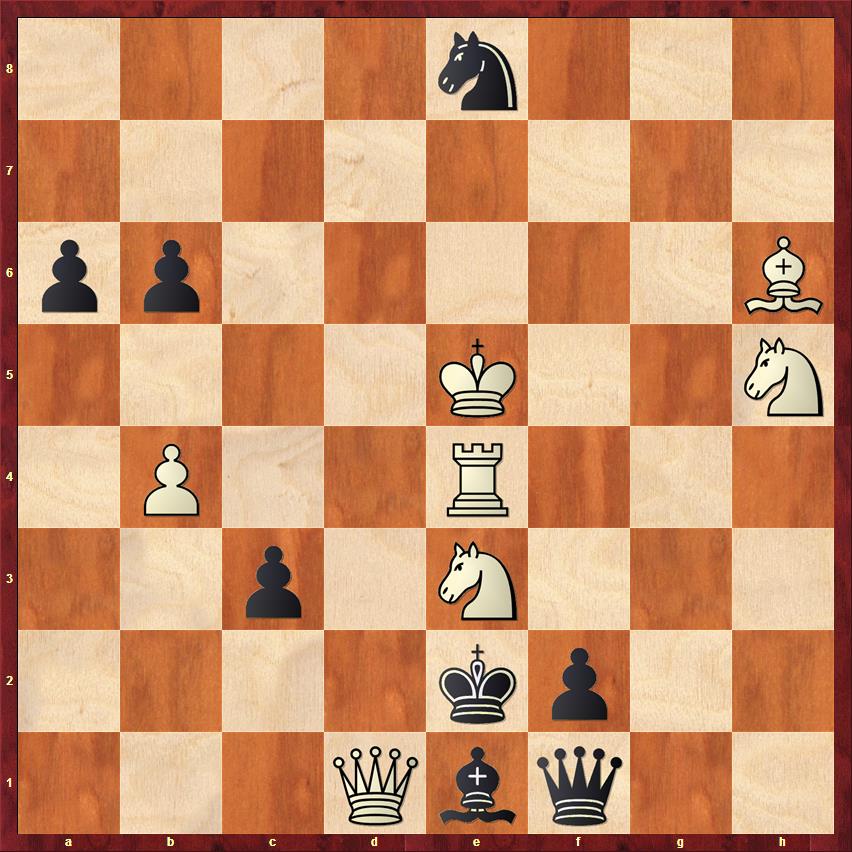
A similar fate befalls black after 1. ... Kd2. So black's newly acquired flight squares do not help him. So sad.
I hope you liked that one. See you next week!

1. Na3 does the trick too.
If followed by 1. ... Qe2
then 2. Qd7 check mate.
If followed by anything else,
then 2. Qc2 check mate.
Alas, 1. Na3 does not work. After 1. ... Qe2, the move 2. Qd7 is not check mate, because black can interpose his knight with 2. ... Nd6. Of course, white could then give checkmate by taking the knight, but that is one move too many.
Hmmm... a bit fatigued here..... can't figure out what is the function of Black's pawn on b6?
Oh, maybe prevents duplicate solution 2. Qa6? after 1....Bd2....
If we remove the b6 pawn, then I think 1. Na3 actually would work. Black now has no defense to the twin threats of 2. Qc2 and 2. Qa6.